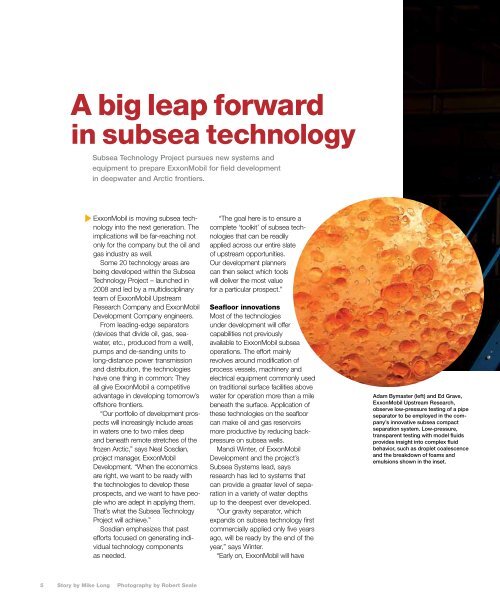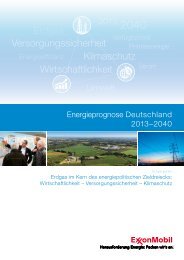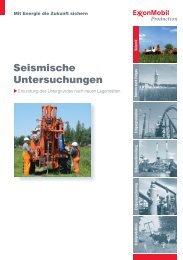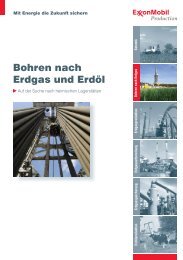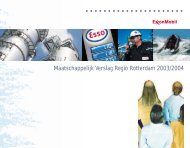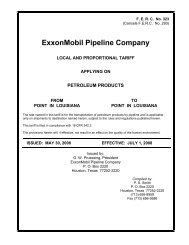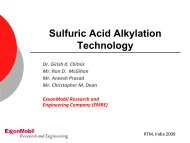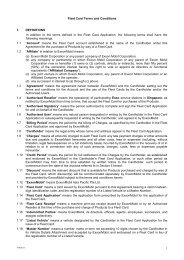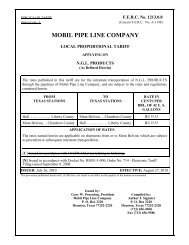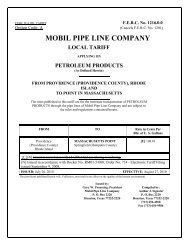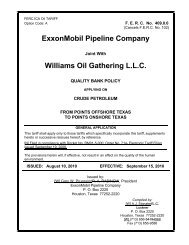2012 — Number 1 - ExxonMobil
2012 — Number 1 - ExxonMobil
2012 — Number 1 - ExxonMobil
You also want an ePaper? Increase the reach of your titles
YUMPU automatically turns print PDFs into web optimized ePapers that Google loves.
A big leap forward<br />
in subsea technology<br />
Subsea Technology Project pursues new systems and<br />
equipment to prepare <strong>ExxonMobil</strong> for field development<br />
in deepwater and Arctic frontiers.<br />
<strong>ExxonMobil</strong> is moving subsea technology<br />
into the next generation. The<br />
implications will be far-reaching not<br />
only for the company but the oil and<br />
gas industry as well.<br />
Some 20 technology areas are<br />
being developed within the Subsea<br />
Technology Project – launched in<br />
2008 and led by a multidisciplinary<br />
team of <strong>ExxonMobil</strong> Upstream<br />
Research Company and <strong>ExxonMobil</strong><br />
Development Company engineers.<br />
From leading-edge separators<br />
(devices that divide oil, gas, seawater,<br />
etc., produced from a well),<br />
pumps and de-sanding units to<br />
long-distance power transmission<br />
and distribution, the technologies<br />
have one thing in common: They<br />
all give <strong>ExxonMobil</strong> a competitive<br />
advantage in developing tomorrow’s<br />
offshore frontiers.<br />
“Our portfolio of development prospects<br />
will increasingly include areas<br />
in waters one to two miles deep<br />
and beneath remote stretches of the<br />
frozen Arctic,” says Neal Sosdian,<br />
project manager, <strong>ExxonMobil</strong><br />
Development. “When the economics<br />
are right, we want to be ready with<br />
the technologies to develop these<br />
prospects, and we want to have people<br />
who are adept in applying them.<br />
That’s what the Subsea Technology<br />
Project will achieve.”<br />
Sosdian emphasizes that past<br />
efforts focused on generating individual<br />
technology components<br />
as needed.<br />
5 Story by Mike Long Photography by Robert Seale<br />
“The goal here is to ensure a<br />
complete ‘toolkit’ of subsea technologies<br />
that can be readily<br />
applied across our entire slate<br />
of upstream opportunities.<br />
Our development planners<br />
can then select which tools<br />
will deliver the most value<br />
for a particular prospect.”<br />
Seafloor innovations<br />
Most of the technologies<br />
under development will offer<br />
capabilities not previously<br />
available to <strong>ExxonMobil</strong> subsea<br />
operations. The effort mainly<br />
revolves around modification of<br />
process vessels, machinery and<br />
electrical equipment commonly used<br />
on traditional surface facilities above<br />
water for operation more than a mile<br />
beneath the surface. Application of<br />
these technologies on the seafloor<br />
can make oil and gas reservoirs<br />
more productive by reducing backpressure<br />
on subsea wells.<br />
Mandi Winter, of <strong>ExxonMobil</strong><br />
Development and the project’s<br />
Subsea Systems lead, says<br />
research has led to systems that<br />
can provide a greater level of separation<br />
in a variety of water depths<br />
up to the deepest ever developed.<br />
“Our gravity separator, which<br />
expands on subsea technology first<br />
commercially applied only five years<br />
ago, will be ready by the end of the<br />
year,” says Winter.<br />
“Early on, <strong>ExxonMobil</strong> will have<br />
Adam Bymaster (left) and Ed Grave,<br />
<strong>ExxonMobil</strong> Upstream Research,<br />
observe low-pressure testing of a pipe<br />
separator to be employed in the company’s<br />
innovative subsea compact<br />
separation system. Low-pressure,<br />
transparent testing with model fluids<br />
provides insight into complex fluid<br />
behavior, such as droplet coalescence<br />
and the breakdown of foams and<br />
emulsions shown in the inset.


